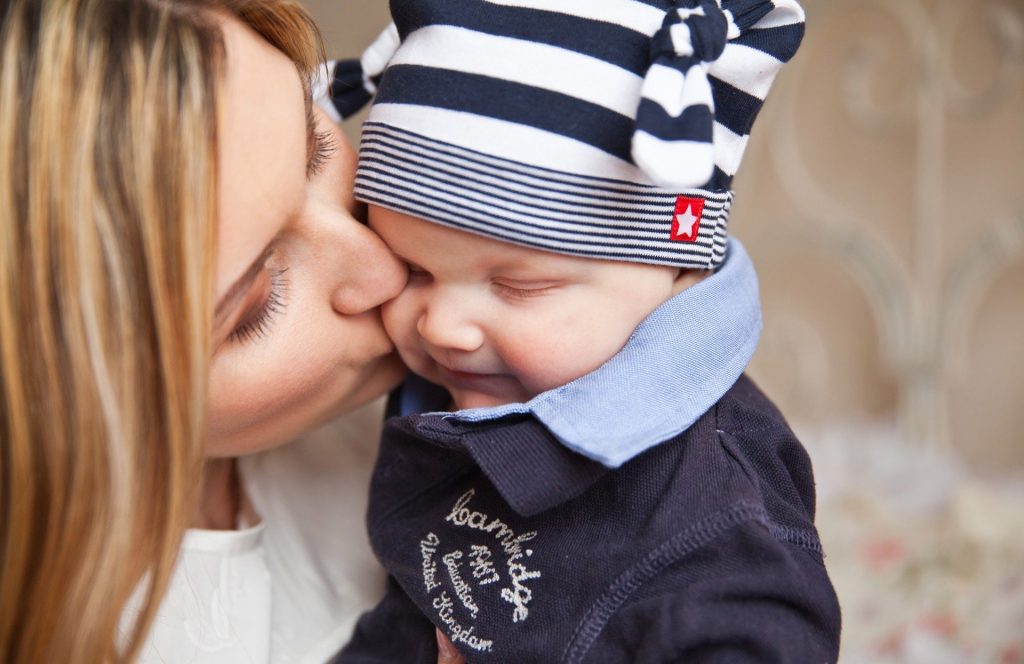By 6 months of age, a baby’s awareness has usually developed enough that he or she starts to notice when people- their parents, in particular- are gone. Once a baby has started to realize this, separation anxiety often starts from. Separation anxiety can appear in the form of clinginess- crying when you leave the room or are out of your baby’s sight. Sometimes, in extreme cases, the anxiety starts once your baby catches wind that you might be preparing to leave.
Typically, this clinginess is a phase. Regardless, however, it can be hard for parents to deal with as they feel guilty for leaving their child in such an upset state. If you’re stuck battling separation anxiety, have no fear! There are tips that you can use to help kick clinginess to the curb, and we’ve made a list of some of the best below.
Stay calm, cool, and collected.
It can be frustrating and stressful to deal with a fit of tears and rage each time you leave the room, go to work, or step away to use the washroom. Staying calm through times like this can be hard to do, but if you can manage it, it will prove to be effective in battling these upsetting episodes.
Keep yourself calm by taking long, deep breaths and by stopping and counting to 10 if you need a few more seconds to calm down. Don’t yell at your child or raise your voice- doing this will only make matters worse and make your child more upset, and in turn, stress you out more.
Reassure your child.

Before you leave, spend a few moments to reassure your child that you’ll be back and that they’ll be okay while you’re gone. Something as simple as saying “I’ll be back soon, I promise” can do wonders to put a child’s mind at ease.
Even if your child is at an age where they don’t understand what you’re saying, your voice can provide comfort and reassurance.
Make separation quick.
Like ripping off a band-aid, the longer you draw out the process of leaving, the more it hurts your child. When you must leave, and your child starts to get worked up, give them a hug and kiss, tell them you love them, and then promptly take your leave. Although the sounds of your child crying will follow you out the door, they’ll recover from the episode more easily because the event was done and over quickly.
If it’s a young baby with this problem, do the same thing as you would with an older child- a quick hug and kiss and then leave without lingering.
Come up with a goodbye routine.
To make goodbyes as easy as possible, come up with a short goodbye ritual. This can include a high five, a hug and kiss, or a rocket ship around the room, as long as it is quick (as mentioned above) and easy enough that you can be consistent with it each time you leave.
The ritual should be simple and fast enough that you can stick to it even when you’re in a rush. Once you come up with a good routine, be sure to stick to it faithfully- both you and your child will benefit from it. Goodbye routines give your child something to expect and make him not surprised when you leave.
Practice time apart.
Practice having time apart from your child. Send him or her to a playdate, or to grandma and grandpa’s house, or allow a friend or relative to care for your child for a short amount of time so that your child can get used to being without you. It’s a good idea to practice this before your child starts preschool or daycare to avoid problems with dropping them off.
This can be used with babies, as well. Babies get used to being around their parents just as much as older children do, so allowing someone else to take care of them for even an hour can put a bit of healthy distance between the two of you.
Plan for slow introductions.
If you’re in need of a babysitter so that you can have a much-needed date night with your significant other, plan to have the babysitter arrive a few minutes before you need to leave. Spend these extra minutes engaging with both the sitter and your child. Doing this will allow the child to see the babysitter as less of a stranger and help him or her to feel more comfortable.
Your child might still cry when you leave, but they will be less likely to be inconsolable after you’re gone if they know the person they are left with.
Conclusion
Clinginess is babies and young children are nothing to be ashamed of. It’s normal for children to be reluctant to part with their caregivers. Even if your child suffers from this anxiety, using the above tips and tricks can help to ease the discomfort of it and make saying goodbye as simple as saying hello.
Author Bio
 Nancy Shaw is the founder of HiFiveBaby where she writes about common problems encountered by parents and how to deal with them, motherhood in general and FAQs about babies, toddlers, and kids. She provides a scientific and medical basis and also her personal experience as a mom to a wonderful toddler. Now you can explore the joy of parenthood with ease!
Nancy Shaw is the founder of HiFiveBaby where she writes about common problems encountered by parents and how to deal with them, motherhood in general and FAQs about babies, toddlers, and kids. She provides a scientific and medical basis and also her personal experience as a mom to a wonderful toddler. Now you can explore the joy of parenthood with ease!




